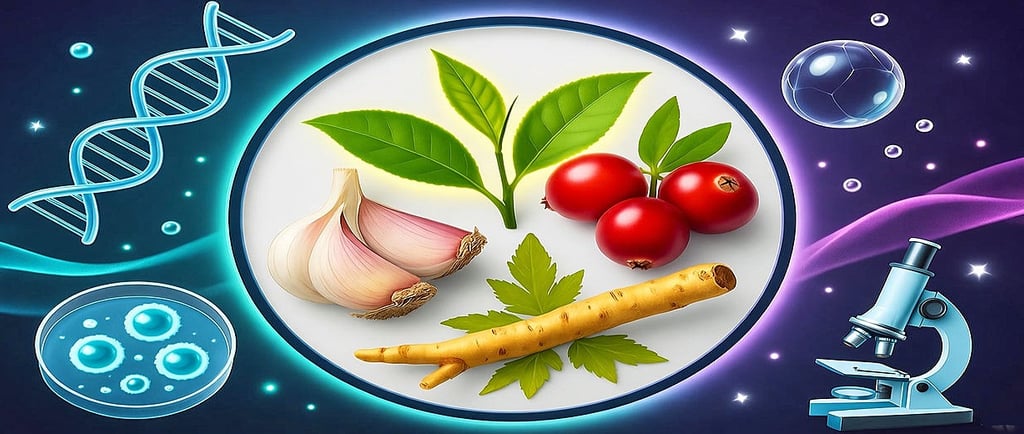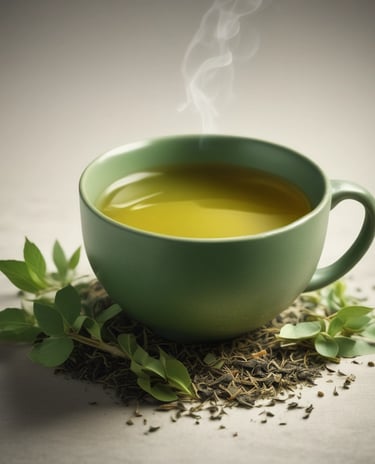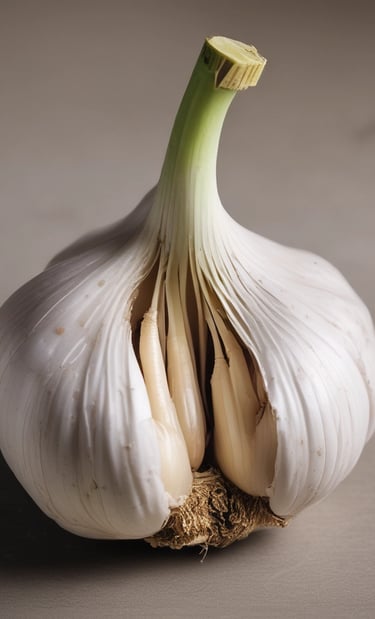Herbal Antibiotic Resistant Modifiers
What if antibiotic-resistant superbugs cause over 39 million direct deaths worldwide by 2050? But could everyday herbs like garlic and cranberry turn the tide, supercharging your antibiotics and outsmarting these deadly threats? Dive into our eye-opening guide on herbal antibiotic resistance modifiers—uncover how nature's hidden warriors might just save the day for you and your family.
10/6/20255 min read


Herbal Antibiotic Resistant Modifiers
In an era where antibiotic resistance is becoming a major global health challenge, many people are turning to nature for solutions. Herbal antibiotic resistance modifiers are plant-based compounds that can help combat this issue by enhancing the effectiveness of conventional antibiotics. These herbs work by targeting the clever ways bacteria evade antibiotics, such as pumping them out of their cells (efflux pumps), producing enzymes that deactivate the drugs (like beta-lactamases), or forming protective biofilms that shield them from attack.
For adults, these modifiers can act as supportive adjuncts to antibiotic treatments, potentially reducing the required dose or overcoming resistance in stubborn infections. In children, the underlying mechanisms are the same—disrupting bacterial defenses to make antibiotics work better—but caution is key. Children's developing bodies may respond differently, so lower doses are typically recommended, and it's essential to consult a healthcare professional to avoid any interactions or side effects. Always remember, these herbs are not a substitute for medical advice or prescribed antibiotics; they're tools to potentially boost outcomes when used responsibly.
Top list of herbs that serve as antibiotic resistance modifiers, along with brief explanations of why and how they work, followed by general dosage guidelines for adults and children (always consult a doctor before use, especially for children):
- Green Tea (Camellia sinensis): Contains epigallocatechin gallate (EGCG), which inhibits enzymes like penicillinase and efflux pumps, sensitizing resistant bacteria like MRSA to beta-lactam antibiotics by preventing them from degrading or expelling the drugs. Dosage: For adults, 200-500 mg EGCG daily (equivalent to 3-5 cups of tea or extract supplements); for children, limited data suggests caution—typically not recommended in high doses, but small amounts in tea (1-2 cups) may be safe under supervision.
- Cranberry (Vaccinium macrocarpon): Its flavonoids disrupt biofilm formation, a common resistance strategy, making bacteria like E. coli more vulnerable to antibiotics by breaking down their protective layers. Dosage: For adults, 120-1600 mg extract daily or 36-72 mg proanthocyanidins (PACs); for children, 2-3 glasses of juice (about 120-360 mL) daily for UTI prevention, but adjust based on age and consult a pediatrician.
- Goldenseal (Hydrastis canadensis): Rich in berberine, it interferes with quorum sensing (bacterial communication) and efflux pumps, reducing virulence and restoring antibiotic susceptibility in strains like MRSA. Dosage: For adults, 250 mg to 1 g three times daily (up to 1.5 g berberine total); for children, dose based on body weight (e.g., 5-10 mg/kg berberine daily), but not recommended for infants or without medical advice.
- Baikal Skullcap (Scutellaria baicalensis): Baicalein potentiates antibiotics like chloramphenicol and quinolones by inhibiting efflux pumps, allowing higher intracellular concentrations of the drugs in multidrug-resistant bacteria. Dosage: For adults, up to 800 mg baicalein as a single dose or 1-2 g dried herb three times daily (limited data); for children, not well-studied and generally not recommended without professional guidance.
- Helichrysum (Helichrysum italicum): Geraniol from its essential oil restores the efficacy of antibiotics like beta-lactams against resistant Acinetobacter by modulating efflux and other resistance mechanisms. Dosage: For adults, dilute 2-3 drops essential oil in 1 oz carrier oil for topical use (2% dilution); for children, consult an aromatherapist—not safe for young children without dilution and supervision.
- Cumin (Cuminum cyminum): Acts as an efflux pump inhibitor, preventing bacteria like Staphylococcus aureus from expelling antibiotics, thus enhancing their activity against resistant strains. Dosage: For adults, 300-600 mg seed extract daily or culinary amounts (up to 3 g seeds); for children, limited data—use in food sparingly and consult for therapeutic use (general spice safety applies).
- Oregano (Origanum vulgare): Its essential oils synergize with antibiotics like fluoroquinolones, potentially inhibiting extended-spectrum beta-lactamases (ESBLs) in E. coli, making resistant infections more treatable. Dosage: For adults, 200 mg emulsified oil daily for short periods (up to 6 weeks); for children and infants, not recommended due to potential risks—avoid or use only under medical supervision.
- Galangal (Alpinia galanga): Phenylpropanoids inhibit efflux pumps in mycobacteria, boosting antibiotic retention and efficacy against resistant tuberculosis-like strains. Dosage: For adults, 1-3 g dried rhizome daily (limited clinical data); for children, not well-established—use cautiously in small amounts and consult a healthcare provider.
- Barberry (Berberis vulgaris): Berberine targets efflux pumps in Pseudomonas aeruginosa, increasing antibiotic accumulation inside cells and reversing multidrug resistance. Dosage: For adults, 500-1500 mg berberine daily in divided doses; for children, 0.1-0.3 g three times daily adjusted by weight, but consult for safety.
- Ginger (Zingiber officinale): Inhibits biofilm formation in Pseudomonas, disrupting protective barriers and making antibiotics more effective against chronic, resistant infections. Dosage: For adults, 1-4 g daily in divided doses; for children, up to 1 g daily (e.g., for nausea or adjunct use), but start low and monitor.
- Garlic (Allium sativum): Contains allicin and organosulfur compounds that inhibit biofilm formation and react with bacterial enzymes, enhancing the efficacy of antibiotics like ciprofloxacin and tobramycin against resistant strains such as MRSA and P. aeruginosa by disrupting resistance mechanisms and providing synergistic antibacterial effects. Dosage: For adults, 2-5 g fresh raw garlic daily or 300-1000 mg extract (standardized to allicin); for children, limited data—use small amounts in food (e.g., 0.5-1 g fresh) and consult a pediatrician, as high doses may cause gastrointestinal upset.
"Real-Life Experiences"
Cranberry for UTIs: One individual with frequent urinary tract infections shared that, after clearing an infection with antibiotics, their doctor recommended daily cranberry gel caps (two per day). They reported fewer recurrences over time, attributing it to the herb's ability to prevent bacteria from sticking to the bladder walls—always taken as a preventive measure under medical guidance.
Garlic and Ginger for Respiratory Infections: A user recovering from a persistent cough and cold described blending garlic and ginger with lemon juice and honey into a syrup, taking two tablespoons twice daily. They noted significant relief from symptoms like sore throat and congestion within a week, highlighting how the combination boosted their immunity during a bout that felt resistant to initial treatments.
Goldenseal for Stubborn Infections: Someone dealing with recurring bacterial issues mentioned using goldenseal alongside antibiotics, as suggested by their herbalist. They experienced faster resolution of symptoms, crediting the herb's antimicrobial properties for helping overcome what felt like antibiotic-resistant strains—stressing the importance of professional supervision to avoid interactions.
Oregano Oil for Overall Immunity: An anonymous reviewer reported incorporating oregano oil into their routine during an infection, combining it with prescribed medications. They felt it enhanced recovery by fighting inflammation and supporting the body's defenses, based on their experience with chronic allergies and occasional infections.
Garlic for Bacterial Resistance: A person shared their success with a garlic-based remedy for an infection that didn't respond well to antibiotics alone. By adding fresh garlic to their diet daily, they noticed improved outcomes, supported by the herb's natural compounds like allicin that target resistant bacteria—done cautiously with doctor approval.In summary, these herbal antibiotic resistance modifiers offer a promising bridge between traditional wisdom and modern medicine, helping us tackle the superbug crisis naturally. By incorporating them thoughtfully—always under professional guidance and with appropriate dosages—we can empower our bodies to fight back more effectively. Imagine a world where herbs and antibiotics team up for victory; it's not just possible, it's a step toward sustainable health for generations to come. Stay curious, stay healthy!






